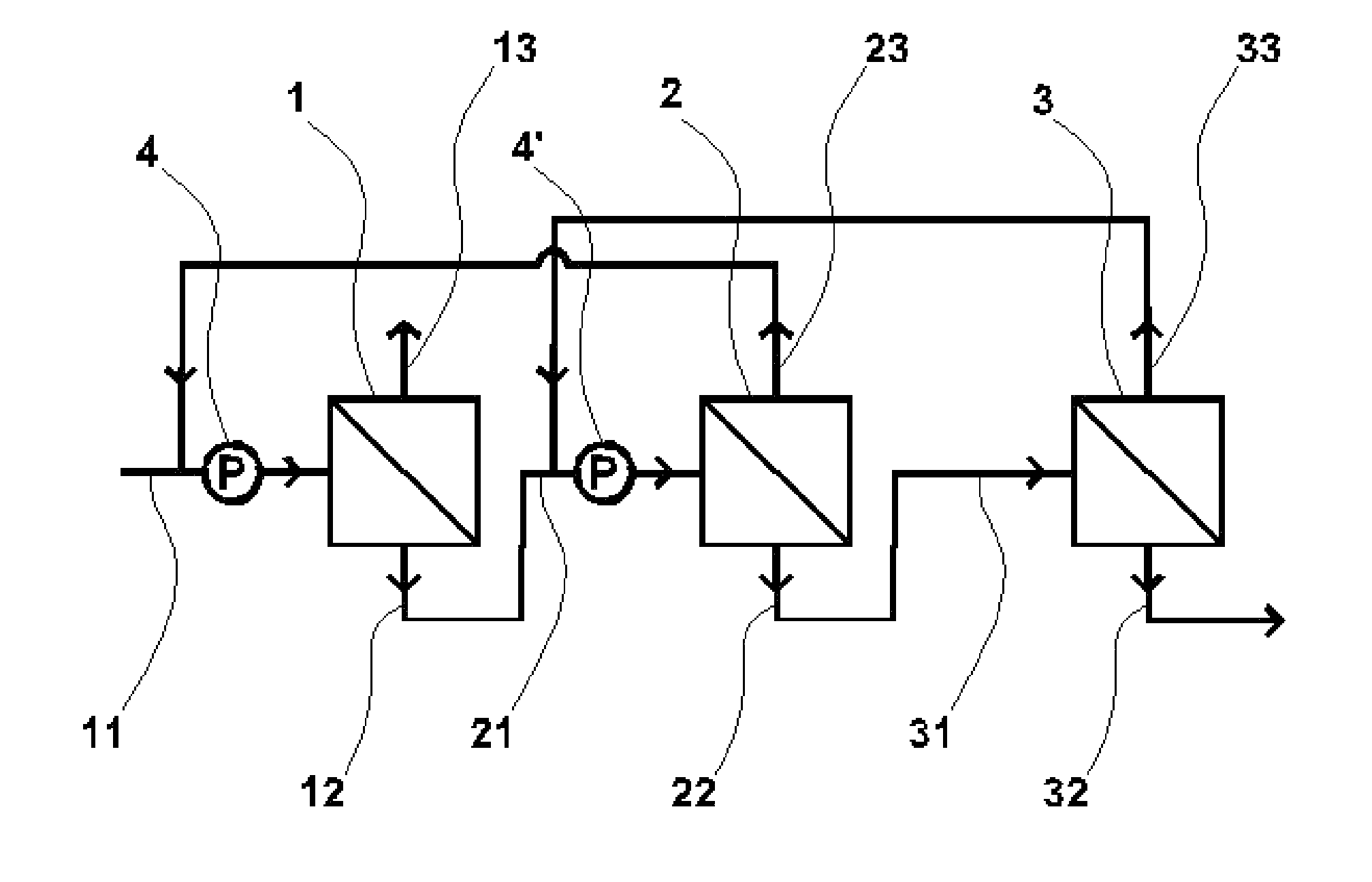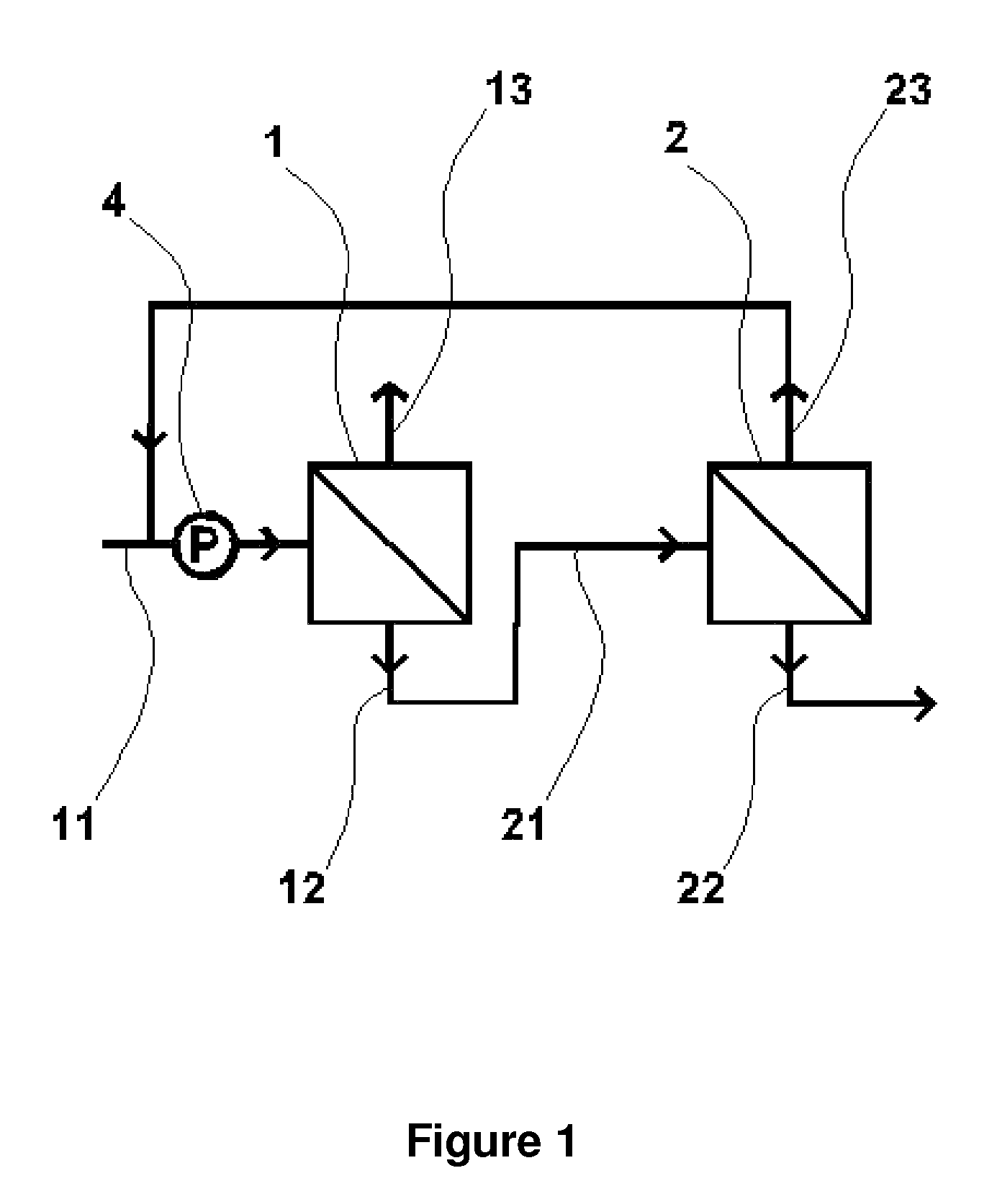Method and device for concentrating material solutions
a technology of concentrating material and solution, which is applied in the direction of filtration separation, multi-stage water/sewage treatment, separation process, etc., can solve the problems of increased pumping requirements, large membrane surface or other hydraulic conditions in the membrane separation module, etc., and achieve high thermal and chemical stability, good purification possibilities, and high permeability
- Summary
- Abstract
- Description
- Claims
- Application Information
AI Technical Summary
Benefits of technology
Problems solved by technology
Method used
Image
Examples
examples 1 to 3
[0041]The following exemplary embodiments simulate two- and three-stage separating methods by use of a refined sugar solution, i.e. an aqueous solution of sucrose at a temperature of 40° C., with the assumption that the temperature will not change significantly within the system, which in practice is achievable by high throughputs of the individual separation modules as well as, optionally, additional heating of the modules and / or conduits.
[0042]The two-stage Example 1 is an exemplary embodiment of the inventive method only, while Examples 2 and 3 illustrate the method as well as the device of the invention.
[0043]For the simulations, the following membranes were used:
[0044]Filmtec NF270 by Dow Water & Process Solutions, a plastic nanofiltration membrane based on piperazine / polyamide having a cut-off of 270 Da;
[0045]TFC-SR3 by Koch Membrane Systems, a plastic nanofiltration membrane based on polyamide having a cut-off of 200-300 Da;
[0046]SelRo MPF-36 by Koch Membrane Systems, a plast...
PUM
| Property | Measurement | Unit |
|---|---|---|
| temperatures | aaaaa | aaaaa |
| temperature | aaaaa | aaaaa |
| concentration | aaaaa | aaaaa |
Abstract
Description
Claims
Application Information
 Login to View More
Login to View More - R&D
- Intellectual Property
- Life Sciences
- Materials
- Tech Scout
- Unparalleled Data Quality
- Higher Quality Content
- 60% Fewer Hallucinations
Browse by: Latest US Patents, China's latest patents, Technical Efficacy Thesaurus, Application Domain, Technology Topic, Popular Technical Reports.
© 2025 PatSnap. All rights reserved.Legal|Privacy policy|Modern Slavery Act Transparency Statement|Sitemap|About US| Contact US: help@patsnap.com



